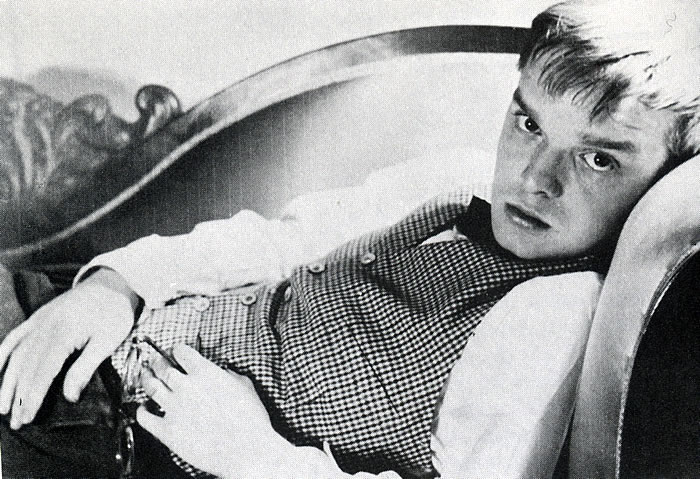I’m going to start a on going series in this blog where I talk about books I think should be better known, but for some reason aren’t. This is inspired by a book I own called Rediscoveries, edited by David Madden. Rediscoveries is a collection of essays by famous writers like Robert Warren Penn, Joyce Carol Oates and Anias Nin about books that should be better known such as Adolphe by Benjamin Constant, Things The Way They Are by Gertrude Stein and Revolutionary Road by Richard Yates. I’m calling my series “Hidden Gems” because I don’t think many of them were actually discovered to begin with and that’s why I’m calling these books Hidden Gems.
The first book is a forgotten novel by a famous author, Other Voices, Other Rooms by Truman Capote.
This was the first novel of Capote’s that was published in 1948. Unfortunately, it is better known for the famous Harold Hamala photograph on the back of Capote leaning back on a sofa, giving a come hither look than it is for being a forerunner of gay literature.

To put the book in perspective, books with gay themes were being published after the second World War. In 1947, The Gallery by John Horne Burns came out with a chapter written about a gay bar overseas in Italy during the War. In 1948, Gore Vidal’s The City and The Pillar talked honestly about a gay man’s life in Hollywood and New York. In 1950, James Barr’s tale of two sailors in love, Quatrefoil, was published. Closet doors were finally being pried open.
![Other_Voices_Other_Rooms_First[1]](https://hvwg.org/wp-content/uploads/2016/02/Other_Voices_Other_Rooms_First1-205x300.jpg) Other Voices, Other Rooms starts out when 13 year old Joel Harrison Knox makes the journey from Noon City to Skulls’s Landing, after his mom died, so he can live with his father. Joel meets his step mom Amy Skully as well as a tomboy his age Idabel Thompkins. There is also an African-American driver named Jesus Fever and his granddaughter Missouri Fever. He doesn’t meet his day right away, but playing one day he sees a “woman in the window” who turns out to be his gay uncle Randolph. Joel eventually meets his dad, who is comatose in one of the bedrooms upstairs. Eventually, Joel and Idabel runaway in the pouring rain to a nearby fair. Joel catches pneumonia and is nursed to health by Randolph. At the end of the book, Joel accepts his identity, his queerness and decides to stay at Skulls’s Landing.
Other Voices, Other Rooms starts out when 13 year old Joel Harrison Knox makes the journey from Noon City to Skulls’s Landing, after his mom died, so he can live with his father. Joel meets his step mom Amy Skully as well as a tomboy his age Idabel Thompkins. There is also an African-American driver named Jesus Fever and his granddaughter Missouri Fever. He doesn’t meet his day right away, but playing one day he sees a “woman in the window” who turns out to be his gay uncle Randolph. Joel eventually meets his dad, who is comatose in one of the bedrooms upstairs. Eventually, Joel and Idabel runaway in the pouring rain to a nearby fair. Joel catches pneumonia and is nursed to health by Randolph. At the end of the book, Joel accepts his identity, his queerness and decides to stay at Skulls’s Landing.
This novel has a Southern Gothic quality that adds to the story. I love that when Joel’s father needs something, he lets a red tennis ball rolling out of his hand, into the hallway and down the stairs. I think the novel needed some of that flavor. What I love most is that at the end, Joel isn’t running away from his family and his queerness, but embraces both. That seems pretty revolutionary for a book published in 1948. Truman Capote’s editor George Davis said, “I suppose someone had to write the fairy Huckleberry Finn.” I think that’s a harsh assessment. I see Capote’s first novel as one of the important pieces of gay literature in America after WWII.
Please let me know if you have read this book and what your thoughts are about it. Also, let me know if there are any other underrated books you want me to discuss and I might blog about it at a later date.




